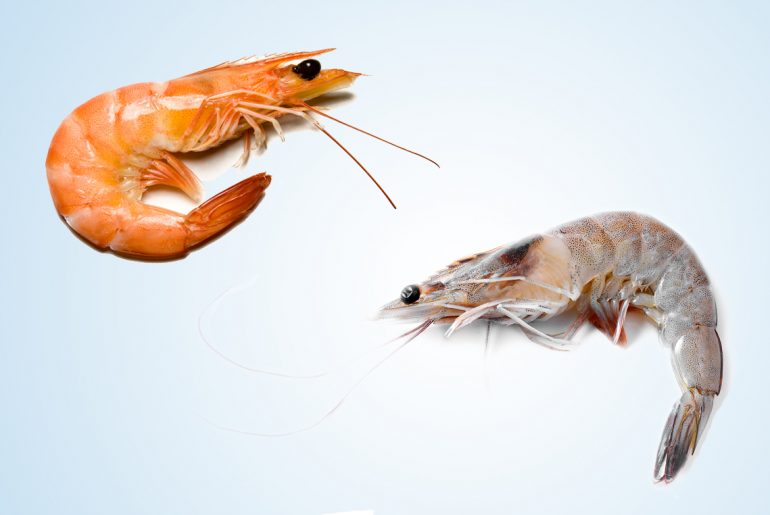Shrimp might be the darling of coastal kitchens but they can be found on menus just about anywhere. Whether it’s shrimp tacos, shrimp scampi, or shrimp cocktail, Americans devour nearly 4.5 pounds of the delicious little crustaceans every year. But are we always sure what we’re eating? Come to think of it, maybe our neighbor’s shrimp boil last summer was full of prawns. What actually is the difference between the two? Let’s settle this culinary question for good.
What’s the difference between shrimp and prawns?
Shrimp and prawns have a lot in common, but they are, in fact, entirely different animals. Both shrimp and prawns are decapods, meaning that they have 10 legs and a thin external skeleton, but that’s where the similarities end.
Shrimp (of the sub-order Pleocyemata, also belonging to crayfish, lobsters, and crabs) are typically smaller in size and live mostly in saltwater. They have claws on two of their legs and a distinct bend to their shape caused by the second segment of their shell overlapping the first and third segments. This curvature is an easy identifier when shopping for shrimp at the market.
Prawns (of the sub-order Dendrobranchiata), on the other hand, live in mostly fresh water, and are usually larger than shrimp. They have claws on three of their legs — a feature which makes unpeeled prawns easy to identify. Prawns’ shell segments overlap in ascending order (first of second, second over third, etc.), so there is less of a bend in their body.
Another difference between the two is how they reproduce. Shrimp carry their their fertilized eggs with them on the underside of their bodies. Prawns release their eggs in to the water to grow on their own.
How to quickly tell the difference
If you’re trying to tell what you have on your plate, the easiest way is to check the overlapping on the shell segments.
Do shrimp and prawns taste different?
You’ll likely never find “prawn scampi” written on the menu, but you’ve probably eaten it at least once. Once the crustaceans come out of their shells, it’s nearly impossible to tell the difference based on taste, so they’re often used interchangeably. Some people think prawns have a slightly sweeter, meatier taste, but most can’t tell the difference.
What’s in a name
Confusing the issue even more is the fact that “shrimp” has become a catch-all term for both crustaceans in the northern states, while “prawn” is favored in the southern states. In the UK, Australia, New Zealand and Ireland, “prawn” is the general term, as well. In either place, it’s not uncommon to substitute one for the other when served unshelled.
Nutritional difference
There are no major differences between prawns and shrimp when it comes to nutritional value, according to Healthline.com. Both are a good source of low-calorie protein. Three ounces of either contain about 18 grams of protein and about 85 calories. They have a good amount of healthy omega-3 fatty acids, vitamin B12, iron, and phosphorus.
So you can substitute them in recipes?
You can easily substitute prawns for shrimp or vice versa. The important thing to remember is count per pound. Prawns are usually larger than shrimp so you may have to make considerations when number is of value to your recipe.
Also see, Squid ink fettuccini with cherry tomatoes and shrimp.




